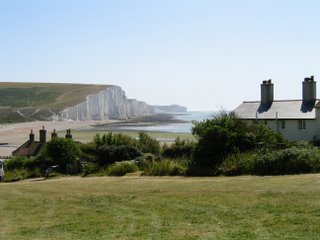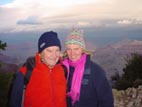Iona and more,
Getting to Iona was quite a task. In actual distance on the map the separation is not great but the route is involved. We caught the 8.20 am train from Glasgow to Oban, a really lovely journey, first along the Clyde and then near Loch Lomond and into the Highlands with water beside or near us most of the way as the lochs go far inland, making the route to Oban very indirect. We arrived at Oban at 11.30 after a noisy trip in a carriage with a group of young Glaswegians, happy enough but very boisterous and absorbing great quantities of crisps, chocolates and sweet drinks. We thought they were temporary company only we were wrong. At Oban we trailed our cases about 100 yards to the ferry, with our young companions, sailing to Mull at 11.45. Quite a big ferry with several decks and saloons and it was a delightful journey to Craignure on Mull. A calm sea, islands in many directions, bright sun and our Glaswegians with fresh supplies of crisps, cordial, chocolates and energy. As we approached Mull we could see Duart Castle, the home of the Macleans, built in the13th Century and restored early in the 20th. Craignure was a small, pretty village and two large buses waited for us. A very dour driver shepherded us on board, together with our Glaswegian companions, who produced more fizzy drinks and sweet supplies and more energy output. A 70 minute journey by single track road from Craignure to Fionnphort – a beautiful drive with steep green hills on either side and occasional views of inlets from the sea. The Iona ferry was much smaller, just two levels, one mostly for cars and the other for all the passengers, crowded along the rails, including our Glasgow companions, still eating, drinking and chatting in broad Glaswegian. Just 10 minutes from Mull to Iona. As we came near, the Abbey stood out on the foreshore, a large tower, shrouded in a metal and canvas cover and obviously under repair and a large church plus residential buildings. We were met by Lotty who shepherded our luggage onto a truck and us by foot to the abbey. Our young companions diverged from us but only to the Macleod Centre, an arm of the Iona community. They were to be our companions for the week.
The Abbey itself is substantial, with the Abbey Church and tower, the large cloisters, a Common Room with various papers and magazines, the Chapter House where most of our discussion sessions were held, the large Refectory where we had our meals and a set of rooms. Kelli and I were lucky to have a bedroom to ourselves, many others were four or more to a room. The building is incredibly creaky so that every step, by those above us, beside us or beneath us, sounded like an army on the move.
The Iona experience was worth the travel and time it took us to get there. The setting is magnificent, the restored Abbey on a small island, no more than four miles long, with its history dating from the original settlement in 536 by St. Columba and the restoration by George Macleod early in the 20th century, followed by the founding and extension of the Iona Community. However, in spite of the beauty and traditions of the setting it was the current people of the Community who impressed us most, both the staff and the volunteers. It has attracted some remarkable people who seem able to encompass hospitality, cooking, entertainment, music and worship with equal enthusiasm and capacity.
It took us some time to adjust to the program. It was called Where Three Streams Meet which had no meaning for us at that stage. Our interest was in the Iona concern for peace and social justice, both areas which were of particular concern to us and on which we had worked over the past several years, including our work with UNESCO. We were surprised in the beginning that the emphasis was very strongly on Gaelic culture. The early sessions focussed strongly on the Gaelic language and its current spread and usage. The religious aspect did not emerge early although we learned the origin of the title Where Three Streams Meet. This refers to the old Highland custom where a person seeking justice could go to a place where three streams meet and declare the nature of the perceived injustice. What emerged clearly to us was the extent of the feeling that exists still about the history of Scotland including particularly the harsh process in the 19th Century by which many people were forcibly removed from the land where their families had lived for generations. The presentations themselves were good. What surprised the outside visitors was the depth of the feeling that exists over what had seemed to us to be ancient wrongs. Our initial interest in social justice was more immediate and obvious, in Palestine, Zimbabwe and Dafur for example. The displacement that occurred 140 years ago did not seem in the same league. However, as the week progressed it was possible to make connections with wider interests and the religious aspect of Gaelic culture emerged. As in all countries there are issues from the past which affect the present deeply and as Australians we are affected by issues which bear some similar characteristics. When we left it was with a feeling that the week had been very meaningful.
The sessions we appreciated most were those in the Abbey church itself, twice a day with a mixture of music, prayer, quietness and thoughtful comment which was very moving. The church was full for most services with our Abbey group, the young people from the Macleod Centre together with many visitors to the island. The pilgrimage, a five hour walk around the island was excellent as was the boat trip to the Isle of Staffa, an even smaller island, deserted except for puffins, seals and many birds and the locale for Fingal’s cave, a dramatic sight which had inspired some of Mendelson’s music.







 – and exploration of Newcastle which is developing through a revitalization of the city centre and the riverfront, including a pedestrian Millennium Bridge, with a dramatic arch which can tilt to allow river traffic to pass underneath.
– and exploration of Newcastle which is developing through a revitalization of the city centre and the riverfront, including a pedestrian Millennium Bridge, with a dramatic arch which can tilt to allow river traffic to pass underneath.
